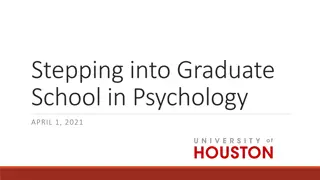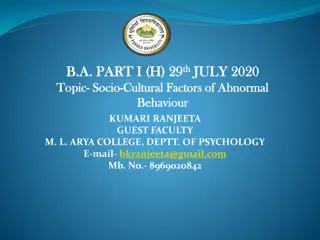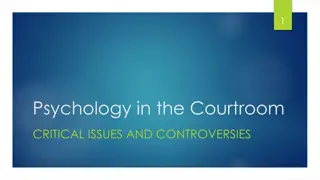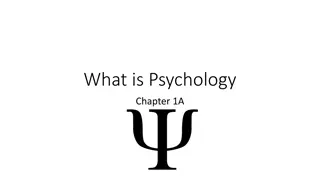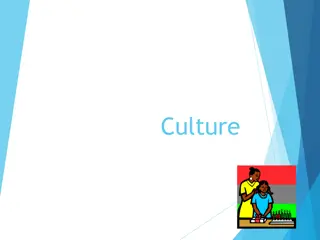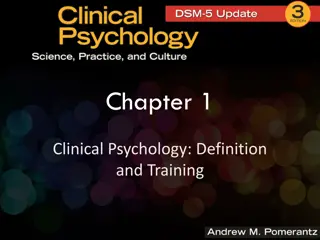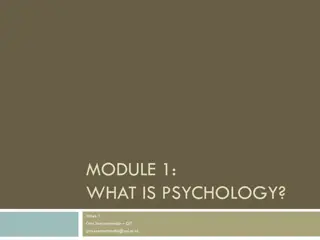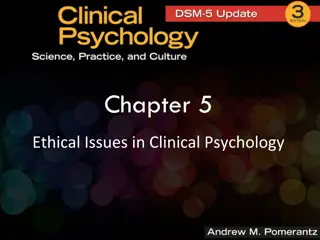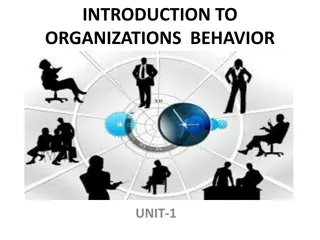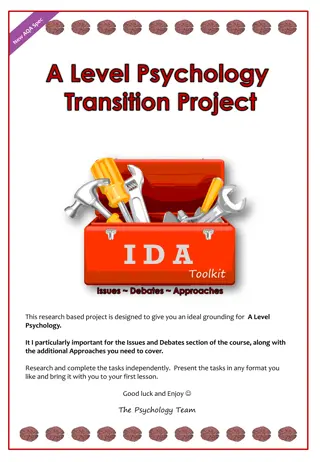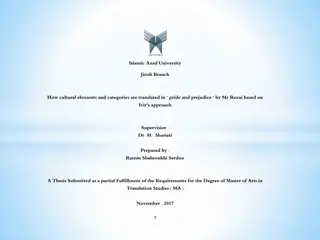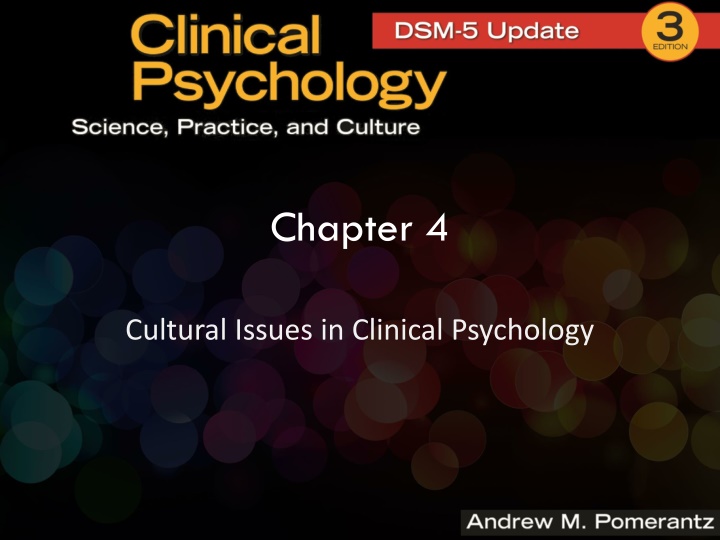
Cultural Issues in Clinical Psychology
The U.S. population is becoming more diverse, creating challenges and opportunities for mental health professionals. Understanding cultural nuances is crucial for effective therapy. Multiculturalism is seen as a significant force shaping modern psychology, with efforts to emphasize cultural issues in professional practice and ethical standards.
Download Presentation

Please find below an Image/Link to download the presentation.
The content on the website is provided AS IS for your information and personal use only. It may not be sold, licensed, or shared on other websites without obtaining consent from the author. If you encounter any issues during the download, it is possible that the publisher has removed the file from their server.
You are allowed to download the files provided on this website for personal or commercial use, subject to the condition that they are used lawfully. All files are the property of their respective owners.
The content on the website is provided AS IS for your information and personal use only. It may not be sold, licensed, or shared on other websites without obtaining consent from the author.
E N D
Presentation Transcript
Chapter 4 Cultural Issues in Clinical Psychology
The U.S. Population The U. S. population is increasingly diverse, particularly in certain areas/cities 20% of U. S. schoolchildren speak a language other than English at home In Miami, Detroit, and Washington DC, a single ethnic minority group represents over half of the population
Cultural Issues (cont.) As stated by McGoldrick, Giordano, and Garcia-Preto (2005), [we] must incorporate cultural acknowledgment into our theories and into our therapies, so that clients not of the dominant culture will not have to feel lost, displaced, or mystified
Multiculturalism as the Fourth Force Some argue that multiculturalism is the defining issue of the current generation of psychology Defining paradigms of previous generations have included Psychoanalysis (1st) Behaviorism (2nd) Humanism/person-centered (3rd) Multiculturalism can enhance any of previous forces
Culture and Clients Culture shapes how clients understand their problems Questions to assess client understanding: What do you call your problem (illness, distress)? What do you think your problem does to you? What do you think the natural cause of your problem is? How do you think this problem should be treated? Who else (e.g., family, religious leaders) do you turn to for help?
Recent Professional Efforts to Emphasize Issues of Culture Journals and books on cultural topics New APA divisions Division 35 Society for the Psychology of Women Division 36 Psychology of Religion Division 44 Society for the Psychological Study of Lesbian, Gay, and Bisexual Issues Division 45 Society for the Study of Ethnic Minority Issues Division 51 Society for the Psychological Study of Men and Masculinity
Recent Professional Efforts to Emphasize Issues of Culture (cont.) Revisions to APA ethical code Competence Discrimination Interpreting Assessment Results Others APA Accreditation Standards
Recent Professional Efforts to Emphasize Issues of Culture (cont.) DSM efforts toward multiculturalism Text describing cultural variations of disorders General guidance for cultural competence Outline for Cultural Formulation Cultural Formulation Interview Cultural concepts of distress glossary Nine terms that represent psychological problems in various cultures Some related to DSM disorders; others unique Exs. Taijin kyofusho, susto, maladi moun
Recent Professional Efforts to Emphasize Issues of Culture (cont.) Revisions of prominent assessment methods MMPI-2 Wechsler intelligence tests
Cultural Competence The counselor s acquisition of awareness, knowledge, and skills needed to function effectively in a pluralistic democratic society 3 main components: Awareness Knowledge Skills
Cultural Competence: Self-Awareness Learning about one s own culture Values, assumptions, biases By doing so, become less egocentric Realize that differences are not deficiencies
Cultural Competence: Knowledge of Diverse Cultures Can gain knowledge by Reading, especially regarding history Direct experiences Relationships with people of various cultures Asking client to explain cultural meaning (to a limited extent) Remember that there are exceptions to cultural trends Metaphor Asian men tend to be relatively short, but Yao Ming is 7 6
Cultural Competence: Knowledge of Diverse Cultures (cont.) Acculturation Response to new cultural environment Balance between adopting new and retaining original culture Specific strategies: Assimilation (high new, low original) Separation (low new, high original) Marginalization (low new and original) Integration (high new and original)
Cultural Competence: Culturally Appropriate Clinical Skills Techniques should be consistent with the values and life experiences of each client Talk therapy may work better for some cultural groups than for others Some cultural groups may respond more positively to action than insight
Cultural Competence: Culturally Appropriate Clinical Skills (cont.) Microaggressions Comments or actions made in cultural context that (often unintentionally) convey negative beliefs Can suggest dominance and cause marginalization or invalidation Psychologists can avoid by examining their own beliefs
Cultural Adaptation Modifying treatments with empirical evidence for members of a cultural group
Etic vs. Emic Perspective Etic Emphasizes similarities between all people Assumes universality Downplays culture-based differences Emic Emphasizes culture-specific norms Appreciate clients in the context of their own culture
Tripartite Model of Personal Identity Three levels of identity Individual level Every person is totally unique Group level Every person is like some others Universal level Every person is like all others Clinical psychologists can recognize all three levels for any client
What Constitutes a Culture? Narrow vs. broad definitions Some argue that ethnicity and race are the defining characteristics of culture Others argue that many other variables can define a culture, such as Socioeconomic status Religion Gender Age Geography/region Political affiliation Disability status
Interacting Cultural Variables Multiple cultural factors can combine to create a unique culture for a particular individual Two people of the same ethnicity can differ on many other variables, and can have very different life experiences as a result
Training Psychologists in Cultural Issues Educational alternatives Courses Readings Real-world experiences Recruit and retain diverse students and faculty Encourage cultural self-knowledge, curiosity, and humility
Measuring the Outcome of Culture-Based Training Efforts Many questions remain How can we measure a baseline of cultural competence? How can we measure change after training? Whose opinion should we seek? Psychologist, client, supervisor, others? How can we infer cause?




